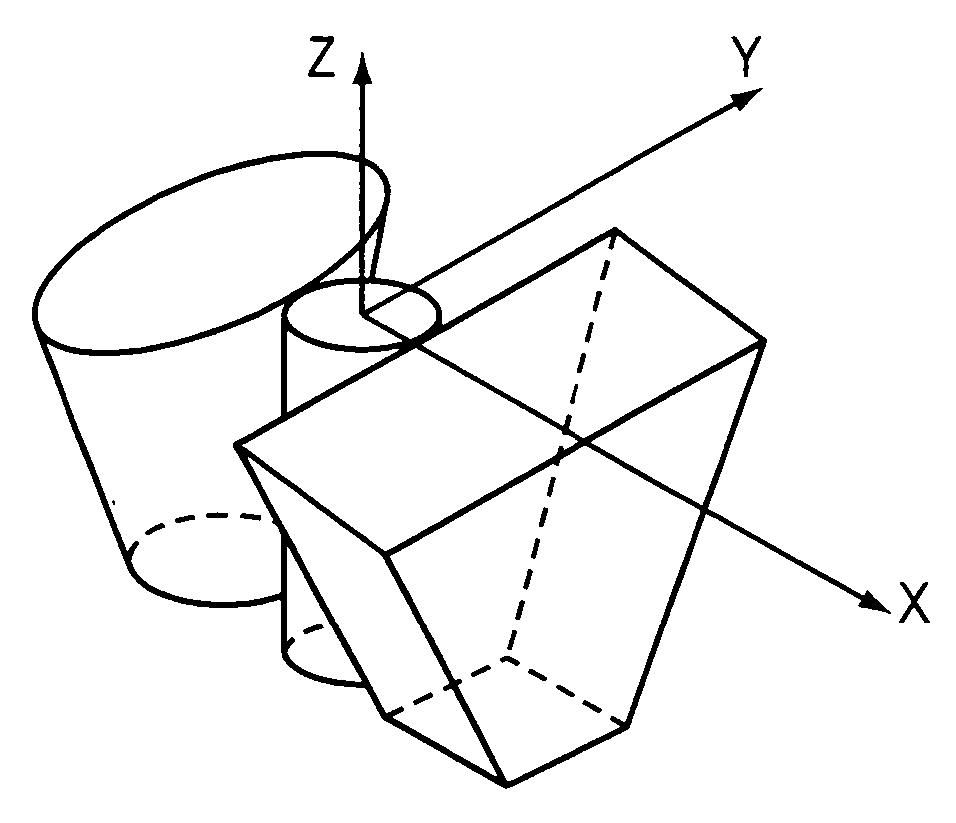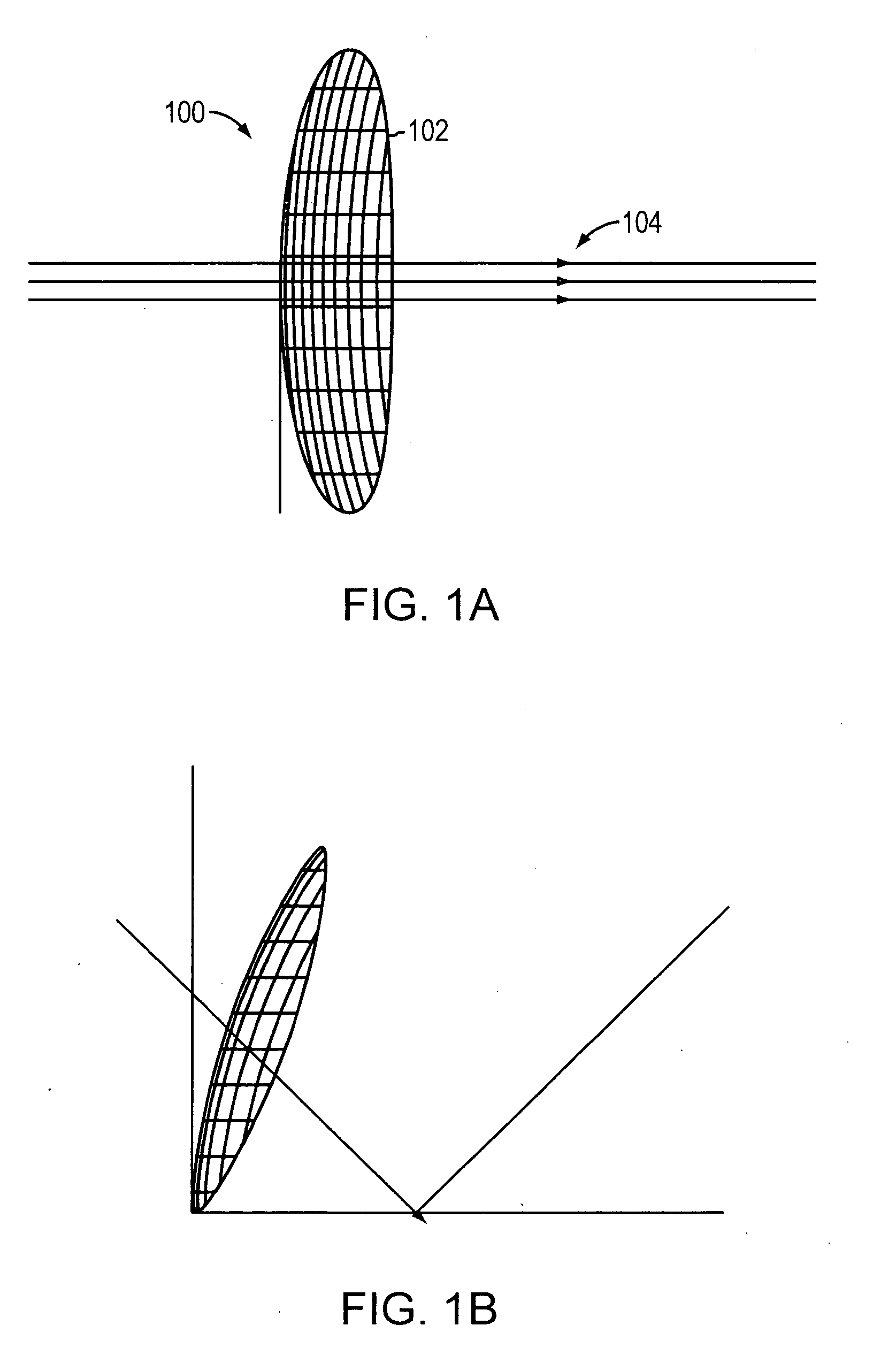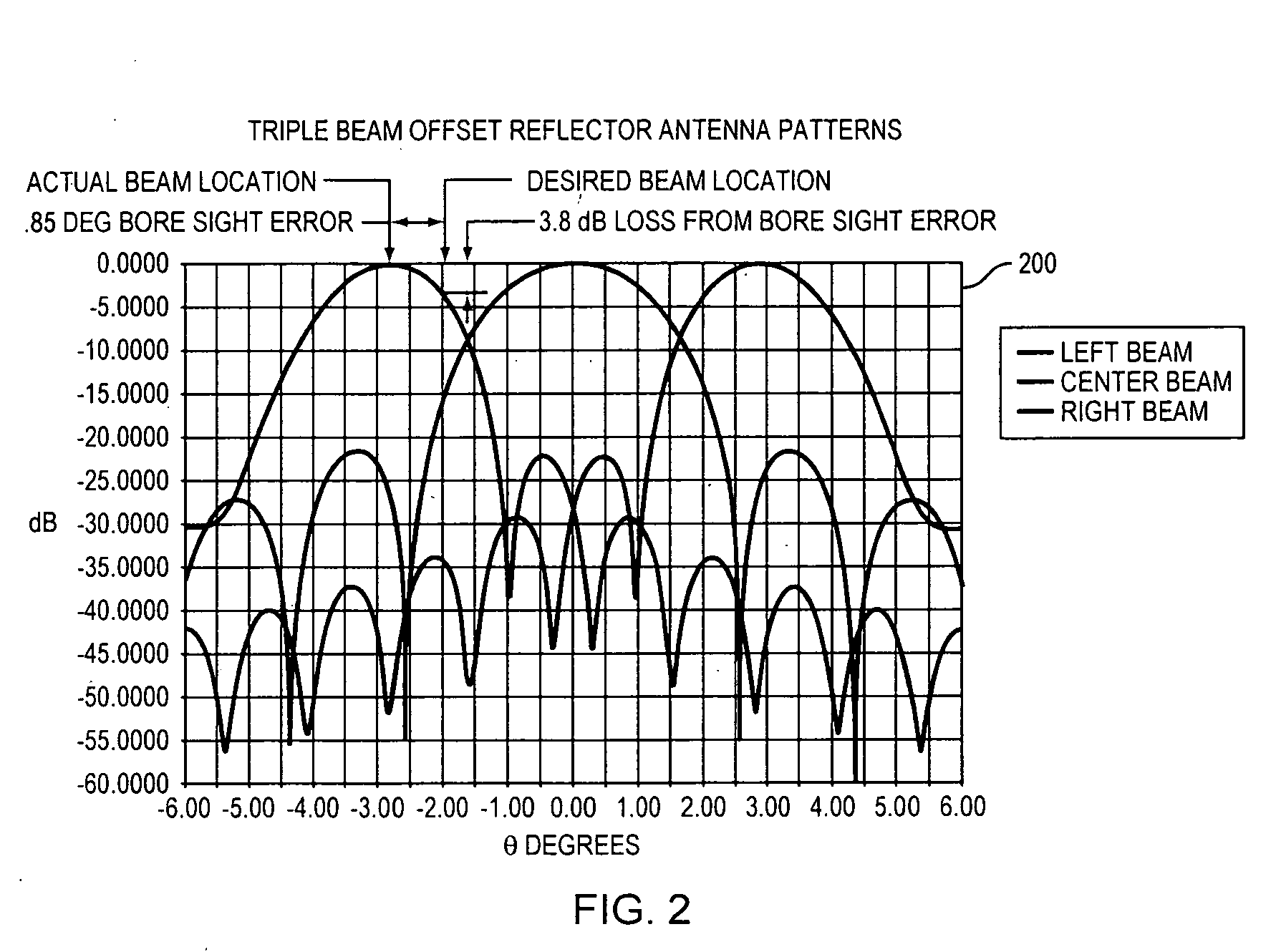Small wave-guide radiators for closely spaced feeds on multi-beam antennas
a multi-beam antenna and waveguide technology, applied in waveguide horns, antennas, electrical equipment, etc., can solve the problems of increasing cost and complexity, requiring relatively small spacing between satellites, and reducing performance, so as to reduce size, eliminate bore sight errors, and sacrifice antenna gain and noise temperature
- Summary
- Abstract
- Description
- Claims
- Application Information
AI Technical Summary
Benefits of technology
Problems solved by technology
Method used
Image
Examples
Embodiment Construction
[0028] The embodiments of the present invention meet the challenge of designing and manufacturing a single antenna with multiple closely spaced feed horns for simultaneous reception from (and / or transmission to) multiple satellites that are closely spaced from the perspective of the antenna. The feed horns and associated circular polarity antenna systems for multiple-beam, multi-band antennas are designed to achieve good circular polarity performance over broad and multiple frequency bands.
[0029] In general, elliptically and other shaped horn apertures are described in the examples in this disclosure, however this invention can be applied to any device that introduces phase differentials between orthogonal linear components that needs to be compensated for in order to achieve good CP conversion and cross polarization (Cross polarization) isolation including but not limited to any non-circular beam feed, rectangular feeds, oblong feeds, contoured corrugated feeds, feed radomes, spec...
PUM
 Login to View More
Login to View More Abstract
Description
Claims
Application Information
 Login to View More
Login to View More - R&D
- Intellectual Property
- Life Sciences
- Materials
- Tech Scout
- Unparalleled Data Quality
- Higher Quality Content
- 60% Fewer Hallucinations
Browse by: Latest US Patents, China's latest patents, Technical Efficacy Thesaurus, Application Domain, Technology Topic, Popular Technical Reports.
© 2025 PatSnap. All rights reserved.Legal|Privacy policy|Modern Slavery Act Transparency Statement|Sitemap|About US| Contact US: help@patsnap.com



